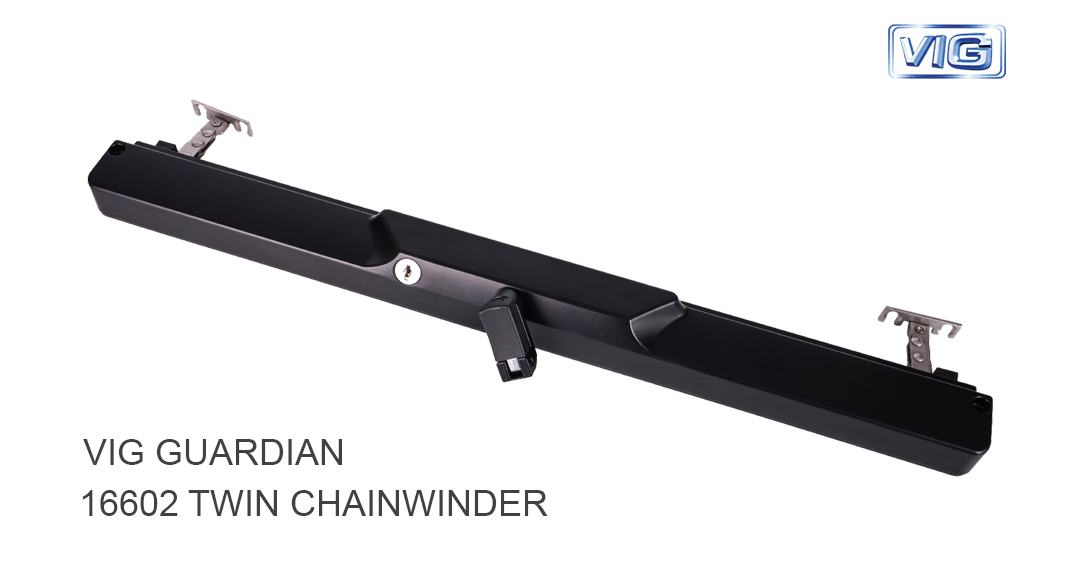The History and Evolution of Chain Window Winders
Chain window winders are a staple in modern homes, particularly for operating awning windows with ease and precision. But have you ever wondered how this ingenious device came to be? The history of chain window winders is a fascinating journey through innovation, design, and practicality. In this article, we’ll explore the origins, evolution, and future of chain window winders, shedding light on how they became an essential part of window hardware.
The Early Days: Manual Window Operation
Before the invention of chain window winders, operating windows was a manual and often cumbersome process. Early windows, especially those in residential homes, were typically casement or sash windows. These windows required physical effort to open and close, often involving pushing, pulling, or lifting heavy sashes. For awning windows, which are hinged at the top and open outward, the lack of a reliable mechanism made them difficult to operate, particularly for windows located in high or hard-to-reach areas.
The need for a more efficient and user-friendly solution led to the development of the first window winding mechanisms.
The Birth of Chain Window Winders
The concept of chain window winders emerged in the early 20th century, coinciding with the rise of awning windows in residential architecture. Awning windows gained popularity due to their ability to provide ventilation while keeping out rain, making them ideal for homes in regions with variable weather conditions.
The first chain window winders were simple devices consisting of a chain, a sprocket, and a handle. The chain was attached to the window sash, and turning the handle would wind or unwind the chain, allowing the window to open or close. This design provided a mechanical advantage, making it easier to operate awning windows, even those located in high or awkward positions.
Mid-20th Century: Refinement and Popularity
As awning windows became more common in homes during the mid-20th century, chain window winders underwent significant improvements. Manufacturers began using more durable materials, such as stainless steel and reinforced plastics, to enhance the longevity and performance of the winders. The design also evolved to include ergonomic handles and smoother chain mechanisms, making them even easier to use.
During this period, chain window winders became a standard feature in many homes, particularly in Australia, where awning windows were widely adopted due to their suitability for the local climate. The winders were praised for their simplicity, reliability, and ability to provide precise control over window positioning.
Late 20th Century to Present: Modern Innovations
In recent decades, chain window winders have continued to evolve, incorporating modern materials and technologies to meet the demands of contemporary homeowners. Some of the key advancements include:
Improved Durability:
Modern chain window winders are made from high-quality materials that resist rust, corrosion, and wear, ensuring they can withstand harsh weather conditions.
Enhanced Ergonomics:
Handles are now designed with user comfort in mind, featuring soft grips and smooth operation to reduce strain.
Aesthetic Upgrades:
Winders are available in a variety of finishes and styles to complement modern home designs, from sleek metallic finishes to minimalist designs.
Integration with Smart Home Systems:
While traditional chain winders remain popular, there is growing interest in motorized or automated versions that can be controlled remotely or integrated with smart home systems.
The Role of Chain Window Winders in Modern Architecture
Today, chain window winders remain a vital component of awning windows, which are still widely used in residential and commercial buildings. Their ability to provide effortless operation, precise control, and durability makes them a practical choice for homeowners and builders alike.
In addition to their functional benefits, chain window winders have also become a design element. Modern winders are available in a range of styles and finishes, allowing them to blend seamlessly with various architectural styles, from traditional to contemporary.
The Future of Chain Window Winders
As technology continues to advance, the future of chain window winders looks promising. Here are some trends and possibilities:
Smart Winders:
The integration of smart technology could lead to the development of chain window winders that can be controlled via smartphones or voice assistants, offering greater convenience and automation.
Energy-Efficient Designs:
Future winders may incorporate features that enhance the energy efficiency of windows, such as sensors that automatically close windows during extreme weather conditions.
Sustainable Materials:
As sustainability becomes a priority, manufacturers may explore eco-friendly materials and production methods for chain window winders.
Customization:
Homeowners may have more options for customizing winders to match their specific needs and preferences, from personalized finishes to adjustable chain lengths.

From their humble beginnings as a simple mechanical device to their current status as a modern home essential, chain window winders have come a long way. Their evolution reflects the broader trends in architecture, technology, and design, showcasing how a small innovation can have a lasting impact on our daily lives.
For more information, product recommendations, or expert advice, contact us today. Let’s make your windows smarter, smoother, and more stylish!